Discovering Aragon’s exquisite Mudéjar architecture
Our magnificent Spanish road trip continues south from the charming cities of Pamplona in Navarre and the ancient Roman city of Zaragoza in Aragon. We’re now heading to the delightful medieval city of Teruel, nestled within the mountainous region of Aragon.
While driving south to Teruel, we kept to the back roads of Aragon, journeying along the weaving lanes and admiring the hillside towns and villages as we go. Road-trippin is such a relaxing way to tour through Spain. It offers the opportunity to jump out at any point to explore each province further.
We’ve still got so much ahead of us on this Spanish road trip as we journey further south to Murcia, Mojácar, Granada, and upon returning north, we’re visiting Toledo, Valladolid, Astorga and Burgos.
Did you catch our inspiration for this Spanish road trip?
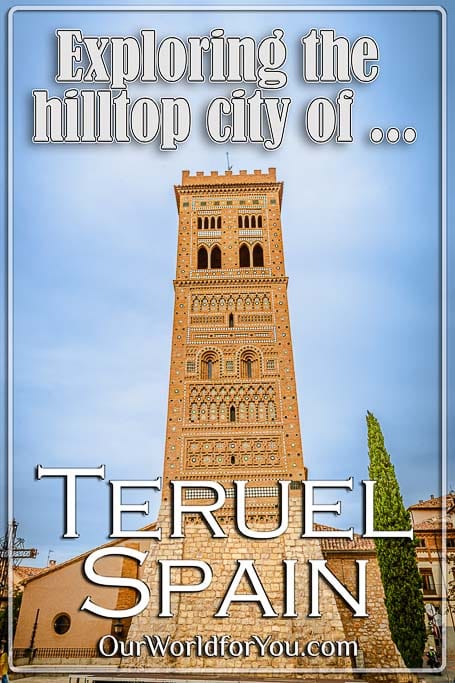
Where is Teruel?
Where to stay in Teruel
Our accommodation in Teruel was at the Gran Hotel Botánicos, just a short hop to the Plaza El Torico in the heart of the Old Town and nearby the Escalinata del Óvalo. The room was extremely comfortable and clean, perfect for a couple of nights’ stay.
Gran Hotel Botánicos has onsite parking with direct access to the hotel; a daily charge is applied.
Alternatively, pop your dates in the Booking.com search box and discover further options for all budgets.
Brief history of Teruel
A rich and turbulent past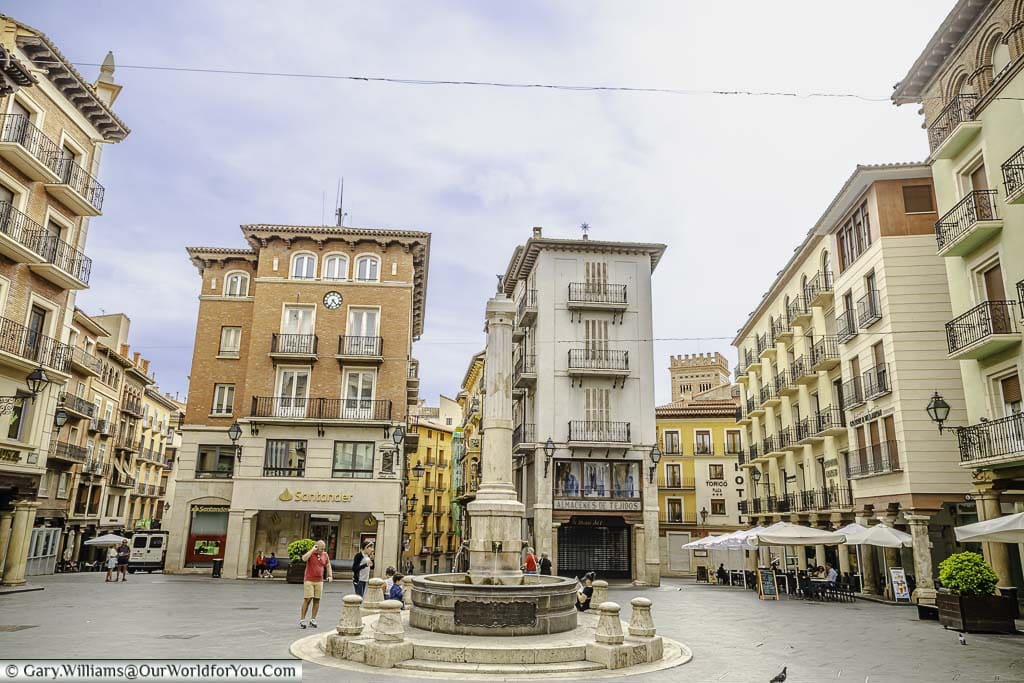
The charming city of Teruel sits high within the Aragon mountains and was once a walled city, of which some remains can still be seen today. The historic old town has had a rich and turbulent past dating back millennia. Its journey spans from ancient Iberian settlements to Roman conquests, with Moorish influences and the brutal scars of the Spanish Civil War.
In the 8th-century, the Muslim Berbers arrived in Teruel and established a fortified settlement; the city flourished under Moorish rule. Many aspects of this era are still visible within Teruel's city layout, including the stunning Mudéjar architecture, a unique blend of Islamic and Christian influences.
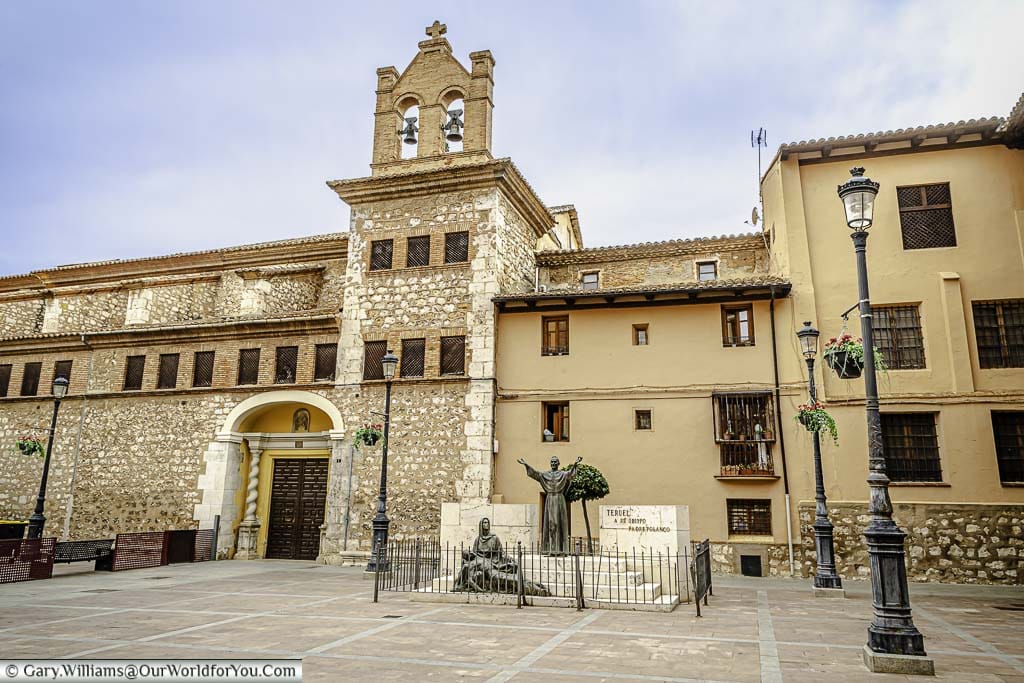
The subsequent centuries saw Teruel blossom into a prosperous medieval city. Trade flourished, driven by the textile industry and agricultural produce. Stunning churches like the Teruel Cathedral were built, showcasing a blend of Romanesque and Mudéjar styles.
The arrival of the 19th-century brought economic challenges with the decline of traditional industries. The 20th-century then brought the devastating Spanish Civil War to Teruel's doorstep. The Battle of Teruel was fought between December 1937 and February 1938, bringing extreme bloodshed to the city.
Exploring the streets of Teruel
Heading to Plaza del Torico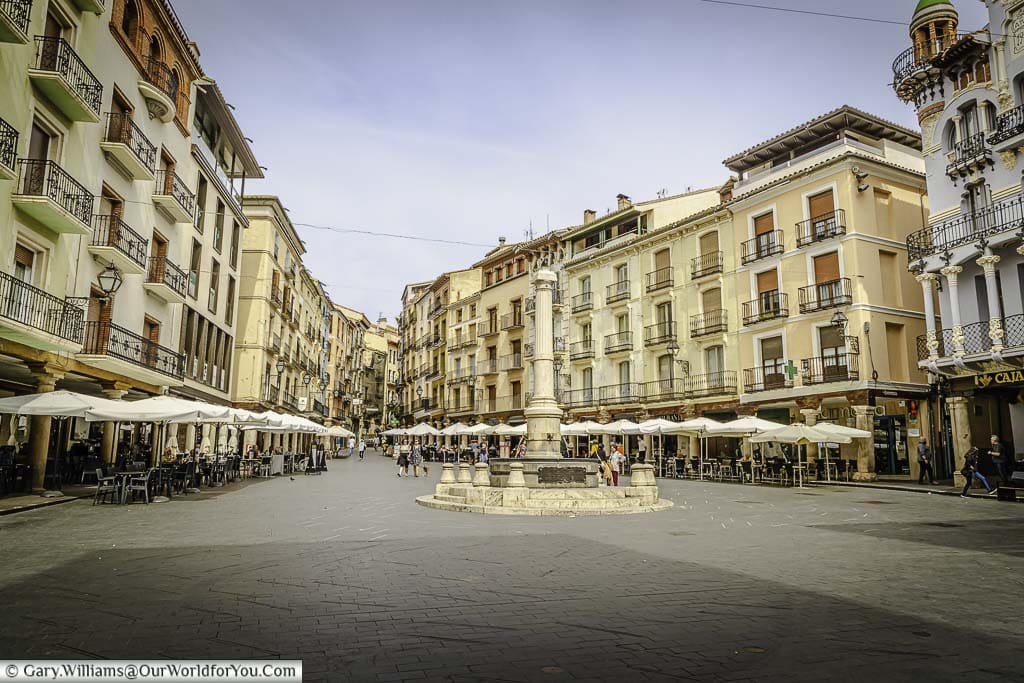
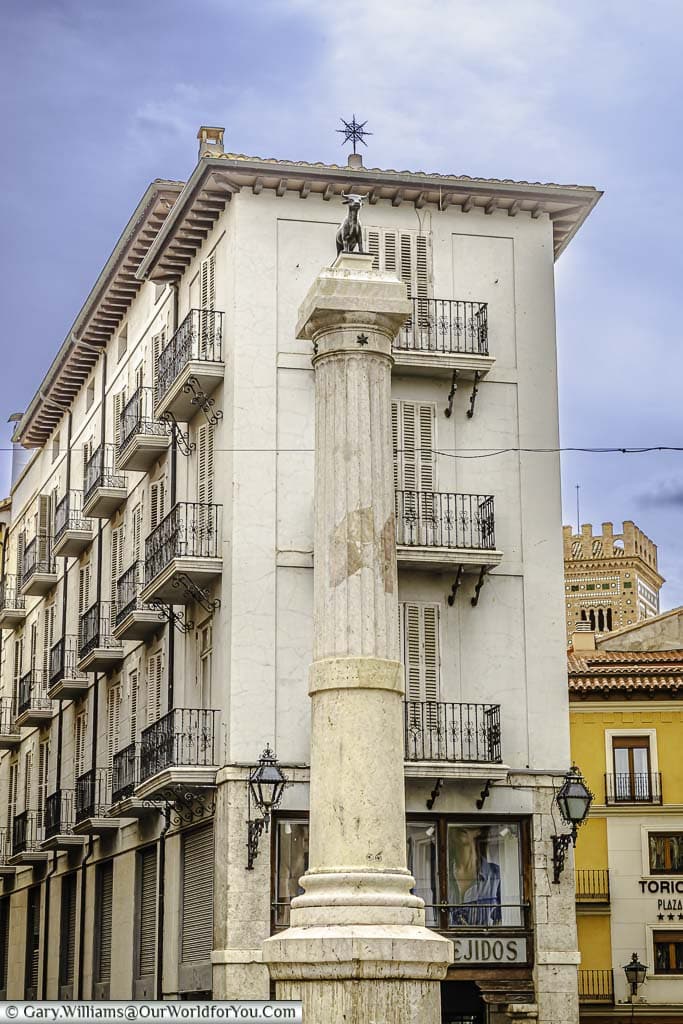
Plaza del Torico had such a friendly feel; along the edges of the colonnades and porticos were wooden benches overlooking the plaza. Here, elderly gentlemen wearing flat caps gathered together, caressing their walking sticks and sharing tales of their day. Such a warming sight to see.
In Plaza del Torico, you’re immediately drawn to the delightful central water fountain. High above, perched on a stone column, is the famous sculpture of El Torico, “the little bull”, now the city’s emblem.
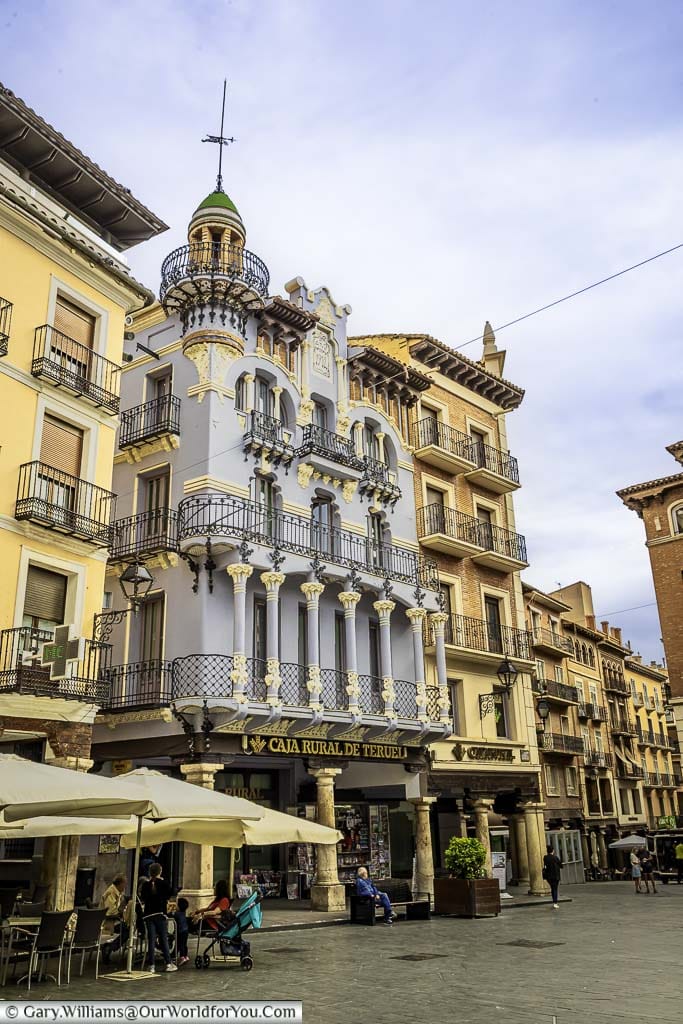
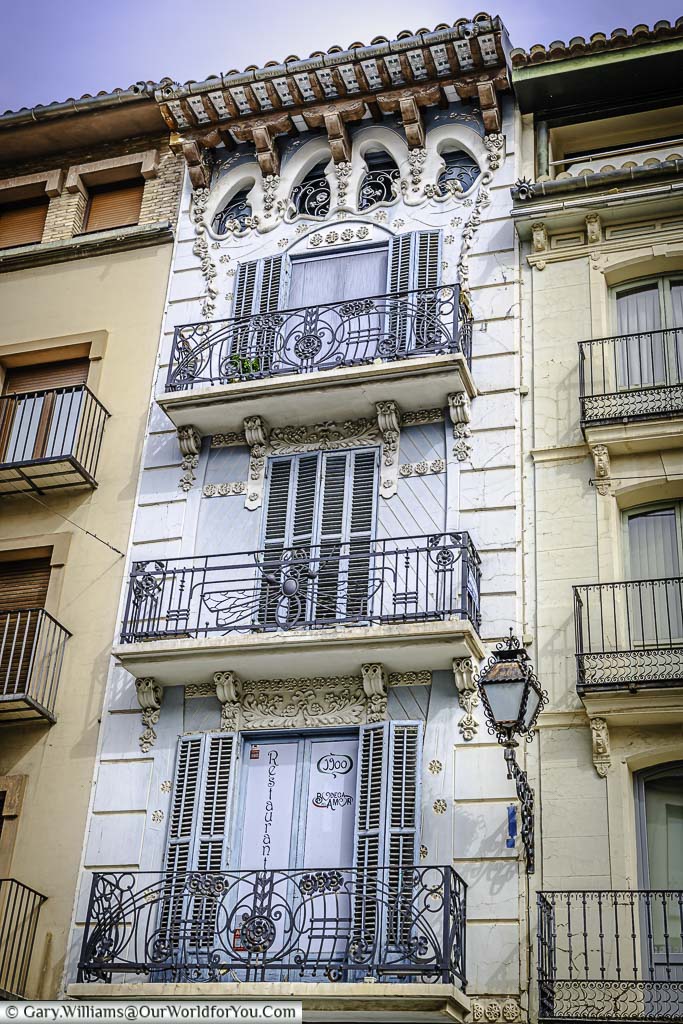
Plaza del Torico is a stunning square with a beautiful mix of architecture, especially the merchant bourgeoisie homes of Casa El Torico, and The Art Nouveau styling was introduced during the early 20th-century. The pastel blue ornate facades and the artistic wrought iron balconies are breath-taking.
Ensure you take your time ambling around Plaza del Torico, and why not enjoy a spot of lunch at Plaza XXI. It’s delightful just sitting back watching, the daily life in Teruel pass you by, and indulging in a plate of the local speciality ‘Jamón de Teruel’, which has PDO status.
There are so many incredible places to discover in Spain and I love planning road trips. I often use the DK Eyewitness books, I find them extremely informative, easy to follow and the pictures and maps tempt you into searching for more.
We used a previous version of this book to plan our Spanish road trips, now you can grab the revised copy.
The Mudejar Towers of Teruel
The jewels of TeruelFrom Plaza del Torico, we ventured off to explore Teruel further and discover the four Mudejar Towers dotted around the city. Teruel has gained the prestigious honour of being a UNESCO World Heritage site due to its exquisite examples of the Mudejar architecture of Aragon.
The four Mudéjar Towers are the towers of Santa Maria, San Pedro, Salvador and San Martín. The oldest of the four is the San Pedro Tower and the tower of the Cathedral of Santa María de Mediavilla de Teruel, which dates from the mid-13th century.
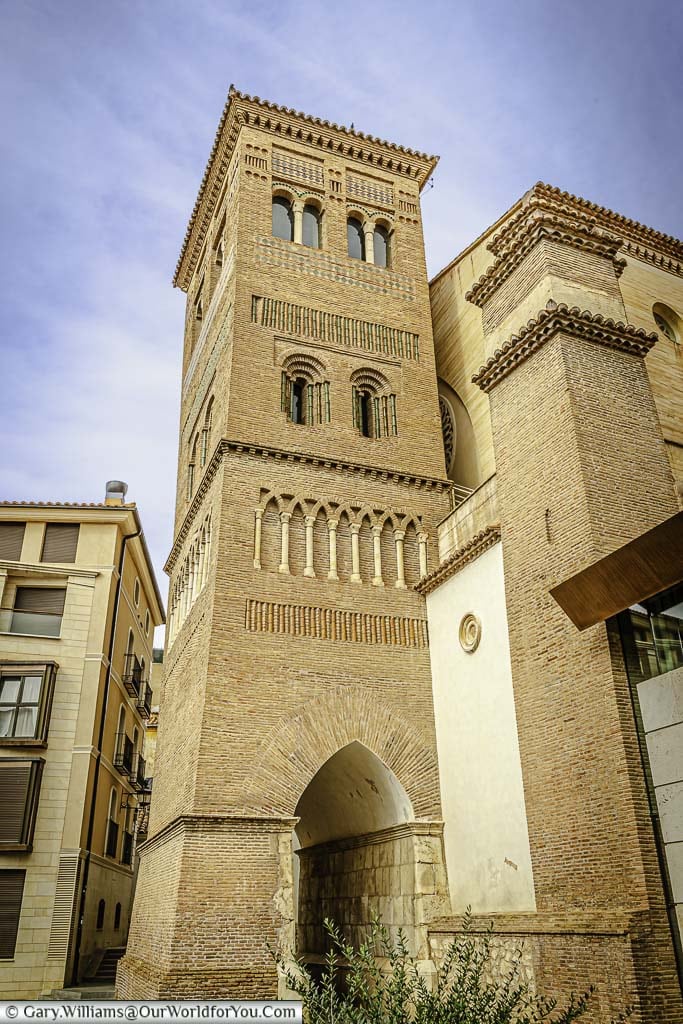
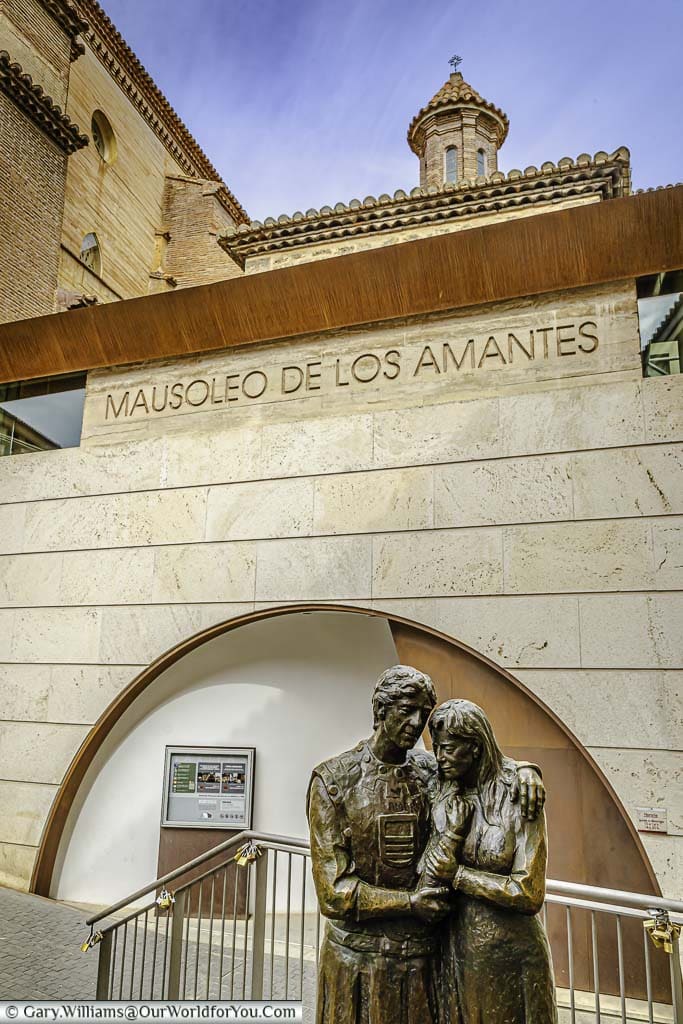
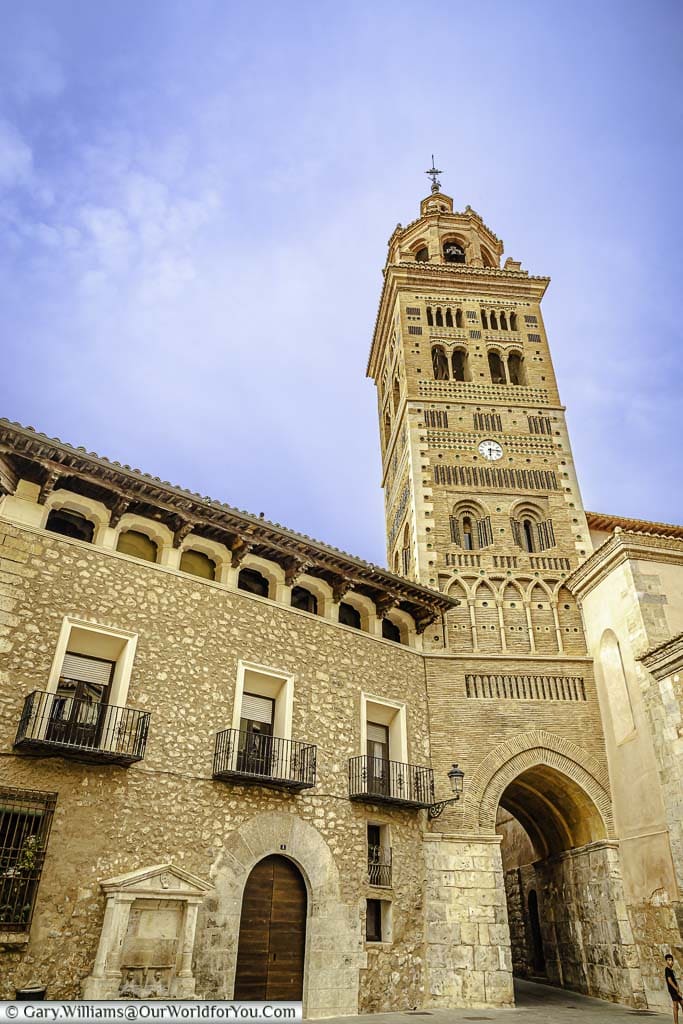
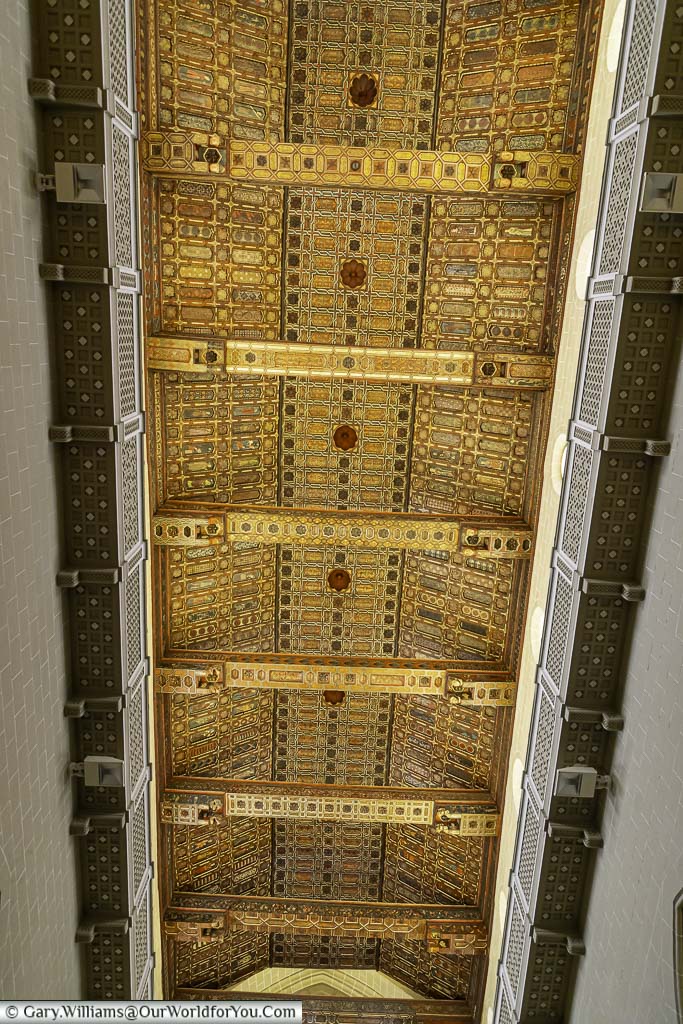
The Mudéjar Tower of Santa María de Mediavilla Cathedral was constructed between 1257 and 1258. Its façade is decorated with eye-catching glazed tiles and beautiful bricks similar in colour to San Pedro Tower.
Ensure you step inside the beautiful 12th-century cathedral to enjoy the stunning Mudéjar wooden ceiling and paintings which were also declared a UNESCO World Heritage site in 1986.
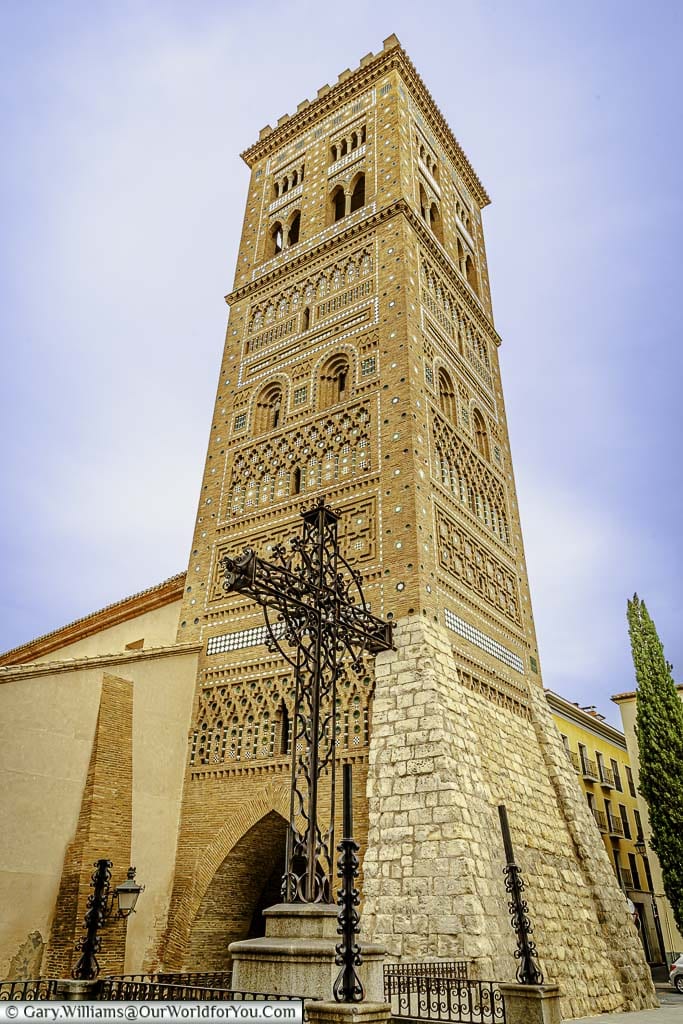
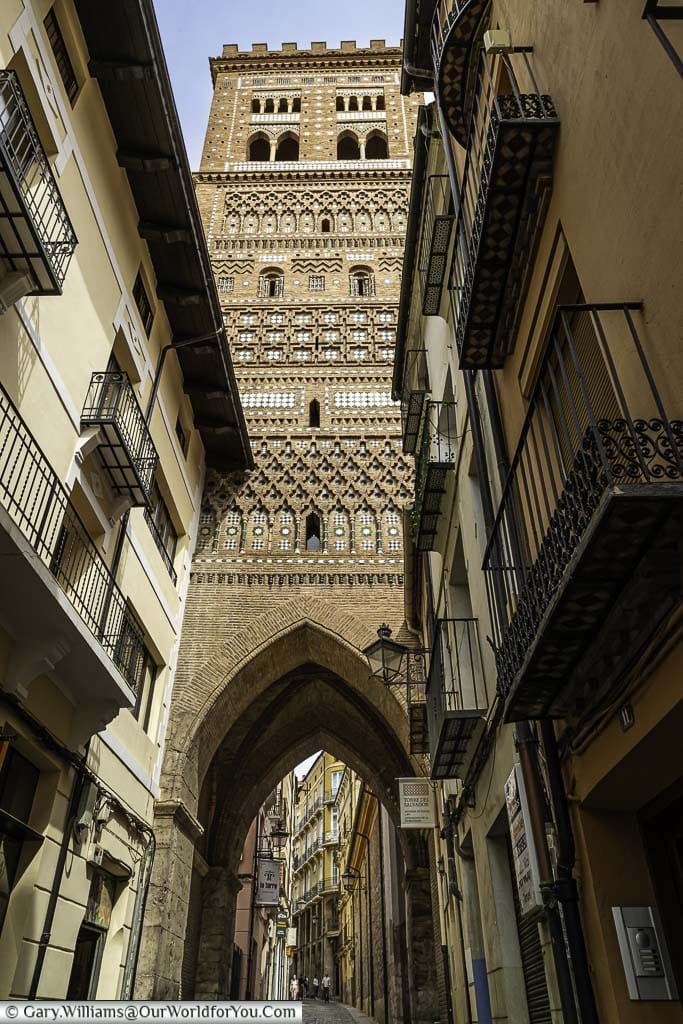
Torre de San Martín and Torre de San Salvador are the last two towers. Once again, these are spectacular towers; I especially loved San Martin, constructed between 1315 and 1316; the intricate façades were exquisite. Adorned with similar glazed ceramic tiles and colourful bricks.
The grand San Salvador tower is believed to be the twin of San Martín. It has a double series of arches and a similar decorative façade.
Tempted to?
Discover more of historic Spain and tour its picturesque countryside in the north, or head south to explore the Sierra Nevada National Park just south of Granada.
You can do it all on a road trip; Rental Cars searches multiple well-known car hire brands and discovers the deals that suit you the best.
Discovering the sights of Teruel
From aqueducts to viaducts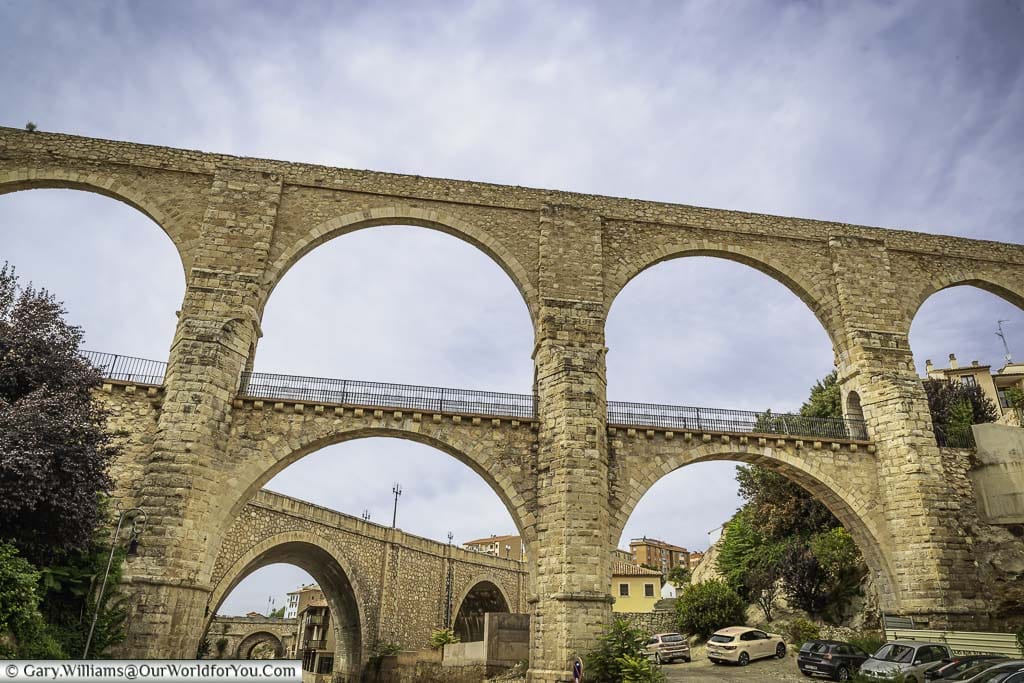
As I mentioned, Teruel is a hilltop city, so it’s no surprise they had an impressive aqueduct built to supply the city with water. Los Arcos, the “aqueduct of the arches”, was built in 1538 and spans a deep ravine which links the modern-day Teruel to the medieval city.
Today, water no longer flows across the aqueduct; however, the two-level bridge with its magnificent arches offers a welcome footpath for the locals.
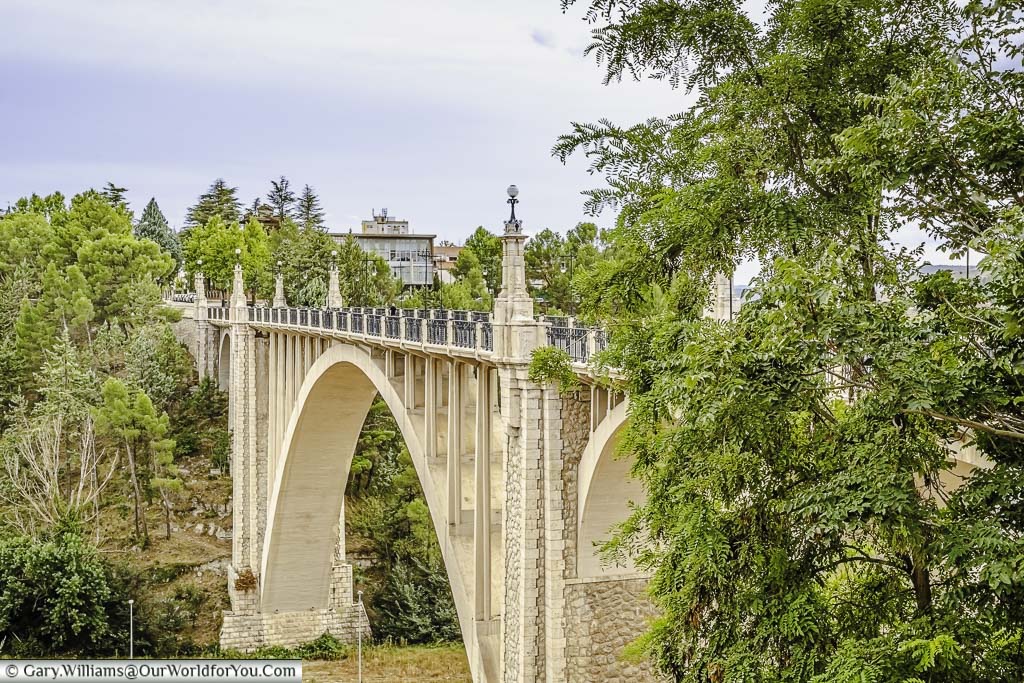
The viaduct on the opposite side of the historic city of Teruel is the Viaducto de Fernando Hué. The viaduct opened in October 1929 and was named after the engineer who designed it. The design of the viaduct was inspired by Los Arcos and allowed the expansion of the city to the south.
Viaducto de Fernando Hué is quite an impressive pedestrian walkway with fantastic views across the Aragon countryside beyond.
Climbing La Escalinata
Admiring the Neo-Mudéjar architecture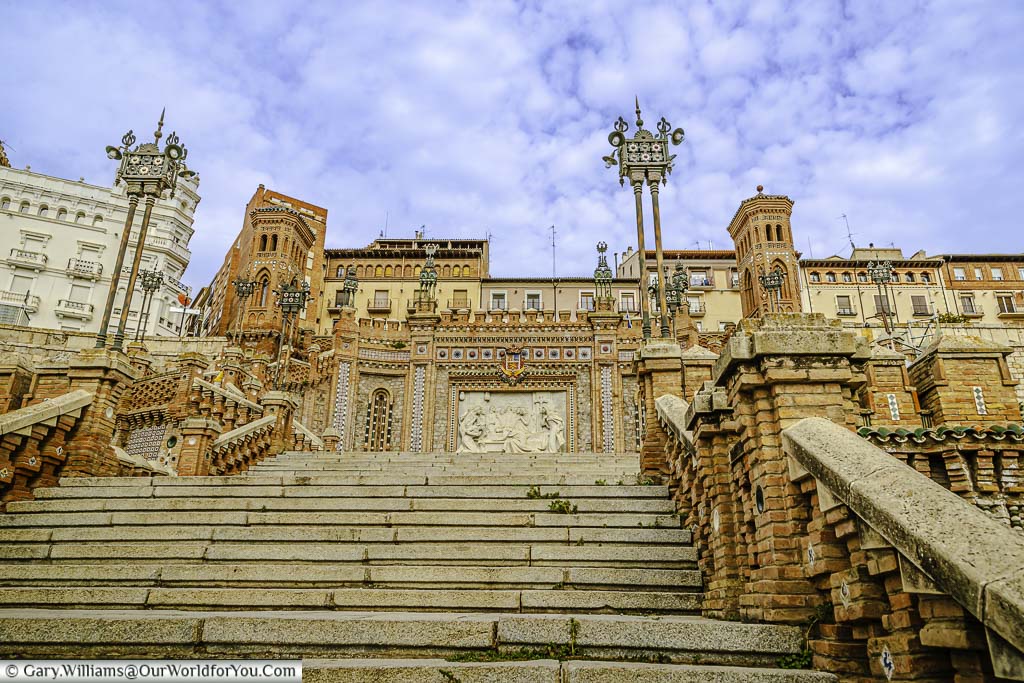
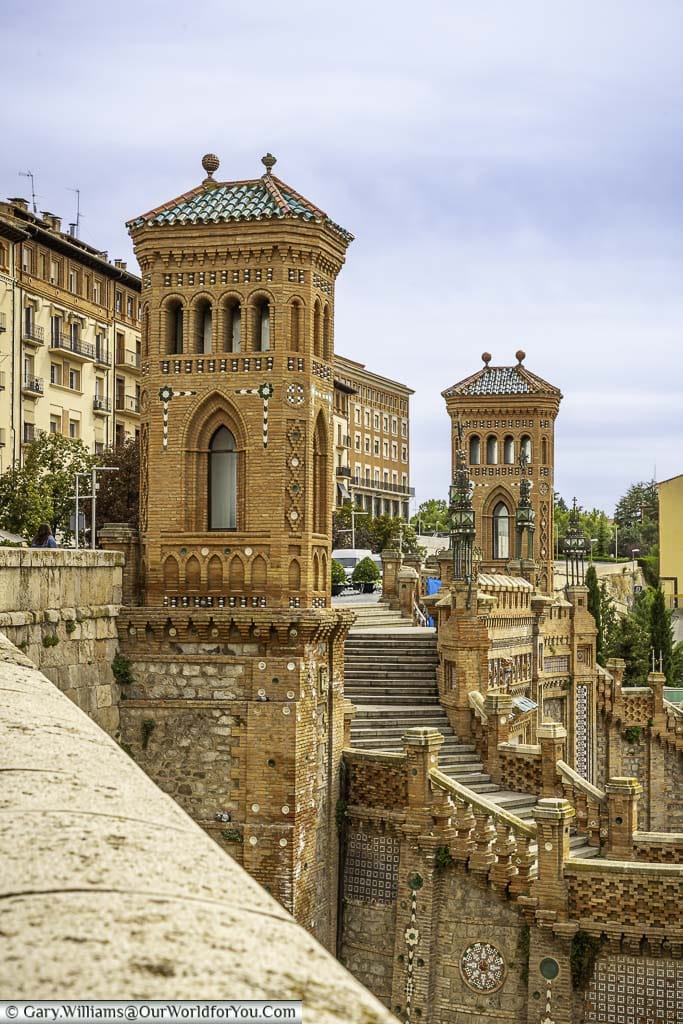
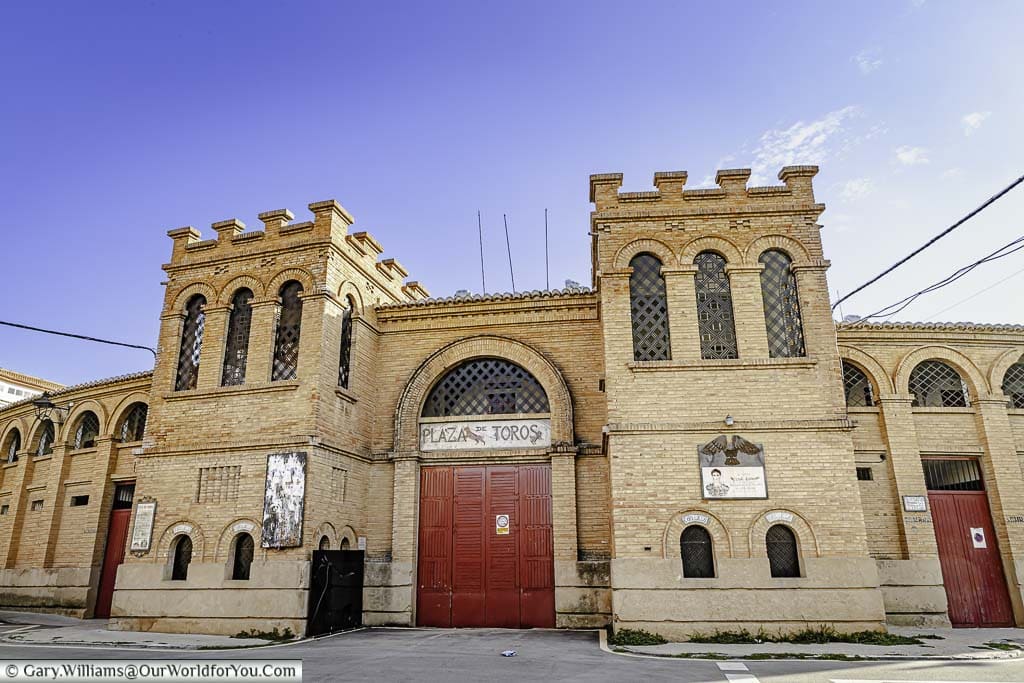
Another stunning example of Neo-Mudéjar architecture is the Teruel bullring, which was built in 1934. I’m in no way condoning bullfighting; however, the architecture of many of Spain’s historic bullrings is incredible.
The stonework used to construct the Neo-Mudéjar building, along with its crenellated towers, is Teruel brick. The bullring is 50 metres in diameter and has a capacity of over 6,000 people.
There are so many incredible places to discover in Spain and I love planning road trips. I often use the DK Guides,
I find them extremely informative, easy to follow and the pictures and maps tempt you into searching for more
Tourist Information
* This post may contain links to affiliated sites where we earn a small commission at no additional charge to you.
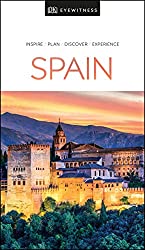
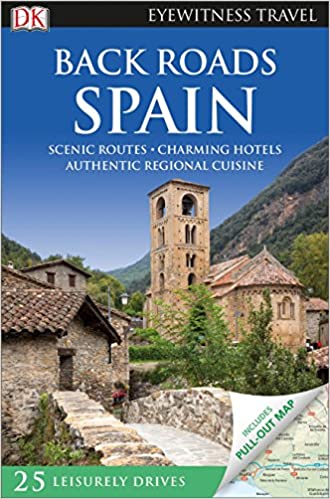

I Love mudejar architecture
Me too, it’s one of my favourite styles, and there are so many stunning examples in Spain.
Which towns and cities have you explored with Mudejar?